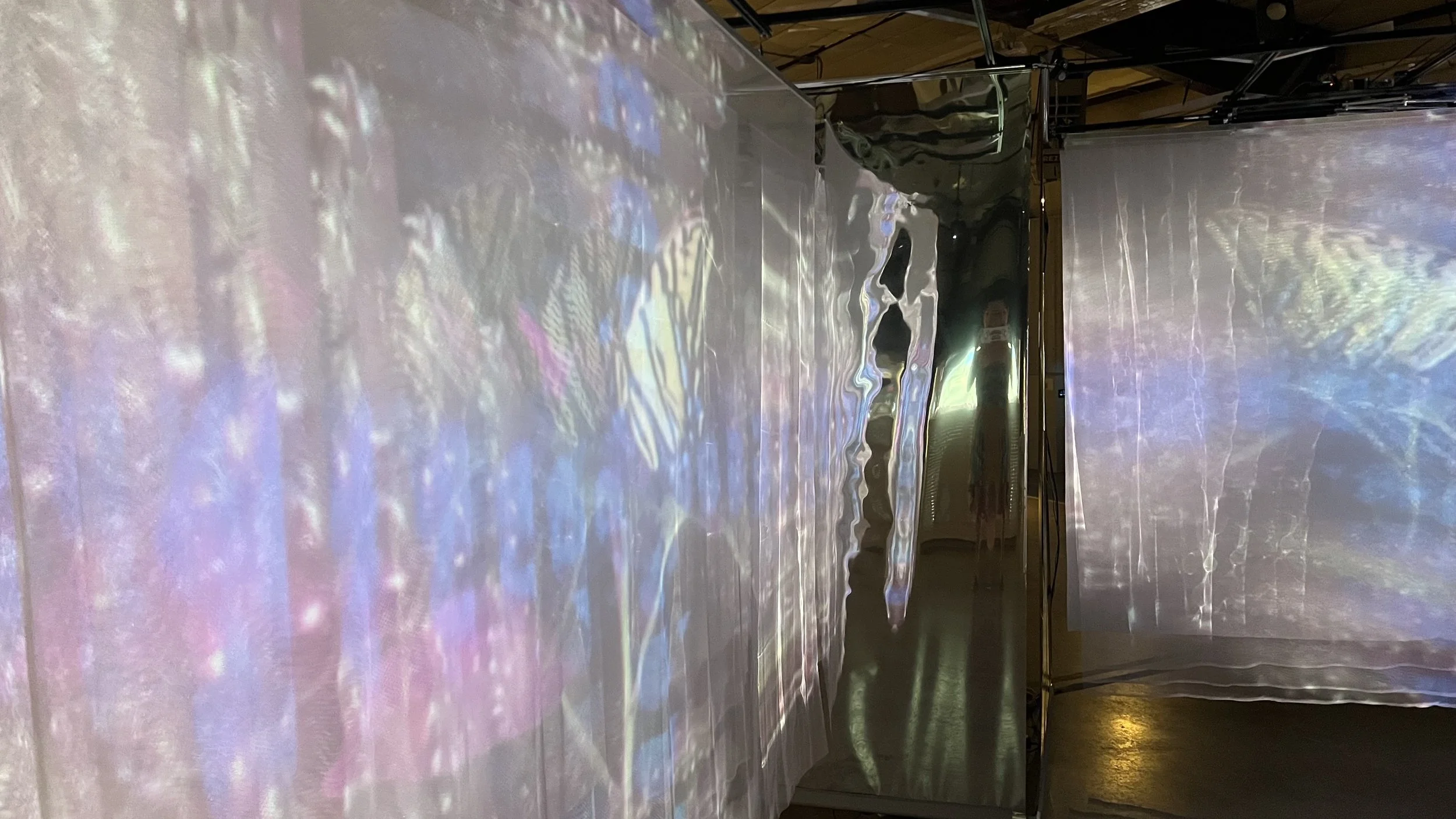(This is/Is this?) How To Do It
2022 - 2023
interactive multi-channel video projection installation; mesh, fabric, aluminum extrusion, reflective mylar, custom built hardware and electronics, digital video and sound
“Since my father’s death in 2017, I’ve thought often about grief. The COVID-19 pandemic brought another wave of grief: loss of community, loss of in person connection, along with additional deaths of family members, friends, and friends of friends. Unlike after the death of my father, for which my family held a funeral, during the pandemic I was left without the conventions of gathering with loved ones to say goodbye, to offer and receive support. Without a proper goodbye, the absences seem almost surreal; known in my mind, but not fully felt.
I started to wonder: How do rituals aid in our process of letting go? What role does repetition and memory (both of the mind and of the body) play in our perception of past events? As humans we perceive the events of our lives occurring in a linear fashion, but is there a way to imagine our lives from a more ubiquitous point of view, a way to transcend to another plane of consciousness? Does transcendence promise peace? Is true acceptance a form of transcendence?” — Valery Jung (정) Estabrook
(This is/Is this?) How To Do It is an ongoing multi-channel video projection installation and performance piece that explores the landscape of the grieving subconscious as it relates to the perception of memory, space, and time.
In its current iteration, video is projected onto multiple layers of transparent screens that expand and contract in response to nearby movement. The stacked layers of mesh create repetition in the video imagery.
Two projectors simultaneously cast two distinct video channels onto the entire structure, allowing imagery from the other to be revealed within the shadow of a passerby.
Datura Dress
2022
tech enhanced costume made of synthetic hair, nylon, microcontrollers, wire, conductive embroidery, LEDs, fiber optic filament
One projector shows video performances by the artist. Inspired by Korean shamanism and the ceremonial use of indigenous psychoactive flowers of the Americas, haunting figures make offerings among creeping botanical tendrils, calling upon the ghosts of the past to emerge and dance beside them. Augmented by a tech-enhanced costume (“Datura Dress”), the performer’s control extends beyond her body to activate the physical surroundings — an attempt to create a virtual emotional space in which loss can safely be confronted.
The second projector casts imagery from documentary footage of the artist’s life during her last week with her father before his death. The words repeated on the screen are a quote from his video taped message to his family: “The end is forgive. You forgive me. I forgive you.”
If standing in front of the projected image, the viewer finds themselves looking at the shadow of their own figure, repeated multiple times within the screens. Observing the structure from the side reveals a reflective interior suggestive of infinity. Subtle movement of the screens play with one’s sense of space, while constantly transitioning between catching and obscuring the focus of the image. Much like the nature of memory itself, there is no way to observe all of the imagery clearly from a single point in space, nor over the course of any determined length of time.
Original music by Valery Jung Estabrook and John Driscoll
Made possible with assistance from Nancy Dewhurst, Neil Mendoza , Ray Martinez, Sage Simpson, Maple Street Dance Studio, and UNM ARTSLab.
Datura Dress, detail of fiber optic filament
(This is/Is this?) How To Do It installed at Currents New Media Festival in Santa Fe, New Mexico, in 2023.
The first iteration of the work installed at Temple Contemporary Gallery at Temple University, Philadelphia, PA, in 2022.






